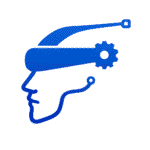Introduction
Generative AI, particularly Large Language Models (LLMs), is revolutionizing how we interact with technology. Today, we will explore the various levels of generative AI, focusing on LLMs. We’ll start with a basic understanding of LLMs and then delve into their different applications and frameworks.
Table of Contents
- What is a Large Language Model (LLM)?
- How Does an LLM Work?
- Understanding the Transformer Architecture
- The Five Levels of LLM Frameworks
- Question-Answering LLM Engine
- Chatbots
- Retrieval-Augmented Generation (RAG)
- LLM Agents
- LLM Operating System (LLM OS)
- Conclusion
What is a Large Language Model (LLM)?
A Large Language Model, or LLM, is a type of artificial intelligence designed to understand and generate human-like text. These models are trained on vast amounts of text data and can perform various language-related tasks such as translation, summarization, and answering questions.
How Does an LLM Work?
LLMs work by taking an input prompt or text and processing it through a complex neural network to generate a response or complete the text. This process is achieved using the transformer architecture.
Understanding the Transformer Architecture
Imagine you’re reading a book and want to understand the story. Instead of just reading word by word, you look at entire sentences and think about how the words relate to each other. That’s what the transformer architecture does. It’s like a super-smart reading tool for computers.
Key Features:
- Attention Mechanism: Highlights important words and their connections, much like how you would highlight key points in a book.
- Self-Attention: Analyzes how each word in a sentence relates to every other word, providing a holistic understanding.
- Positional Encoding: Keeps track of the order of words, ensuring the sequence is understood correctly.
The Five Levels of LLM Frameworks
Let’s explore the five levels of LLM frameworks for building AI applications. This also serves as a roadmap for those starting to learn about generative AI.
Question-Answering LLM Engine
A question-answering engine is a system where you interact with an LLM by sending it a question or prompt. The LLM processes this input and generates a response. This interaction is straightforward: you ask a question, the LLM understands it using its trained knowledge, and it provides you with an answer.
Chatbots
A chatbot builds upon the question-answering LLM by adding conversational history or context. It retains the memory of ongoing conversations, allowing for more dynamic interactions. For example, after asking “What is the capital of India?” and getting the response “New Delhi,” you can follow up with “What are some famous cuisines?” The chatbot understands you’re still talking about New Delhi.
Retrieval-Augmented Generation (RAG)
RAG uses external knowledge sources, such as documents or the internet, to enhance the LLM’s responses. This approach overcomes the limitations of short-term memory and provides more accurate and contextually relevant answers. By leveraging external data, the LLM can perform complex tasks without exceeding its memory limits.
LLM Agents
LLM agents are a trending topic in generative AI. These agents combine function calls with tools to perform specific tasks. For example, an agent can book a flight, read and distill information, create notes, or even publish a blog post. Multi-agent setups involve multiple agents working together to achieve complex goals.
LLM Operating System (LLM OS)
The LLM OS concept envisions a large language model at the center of an operating system. Inspired by Andrej Karpathy, this idea integrates short-term memory, long-term memory systems (like RAG), various tools, and agents, all working together to achieve common objectives. This ambitious vision aims to create a comprehensive LLM OS that integrates multiple AI capabilities.
Conclusion
Understanding the levels of generative AI, especially LLMs, provides a clear roadmap for exploring and building advanced AI applications. From question-answering engines to the LLM OS, each level adds complexity and capability, making AI more powerful and versatile. Whether you’re a beginner or an experienced professional, these frameworks offer exciting opportunities to innovate and create impactful AI solutions.


Leave a Reply